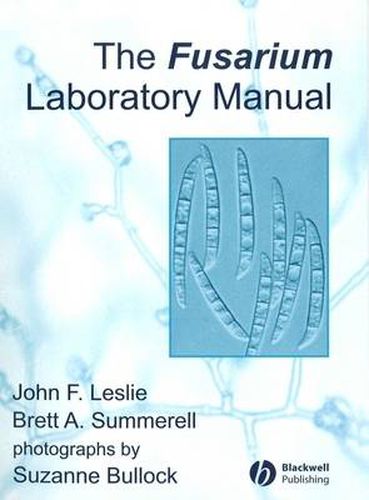Readings Newsletter
Become a Readings Member to make your shopping experience even easier.
Sign in or sign up for free!
You’re not far away from qualifying for FREE standard shipping within Australia
You’ve qualified for FREE standard shipping within Australia
The cart is loading…






For the first time in over 20 years, a comprehensive collection of photographs and descriptions of species in the fungal genus Fusarium is available. This laboratory manual provides an overview of the biology of Fusarium and the techniques involved in the isolation, identification and characterization of individual species and the populations in which they occur. It is the first time that genetic, morphological and molecular approaches have been incorporated into a volume devoted to Fusarium identification. The authors include descriptions of species, both new and old, and provide protocols for genetic, morphological and molecular identification techniques. The Fusarium Laboratory Manual also includes some of the evolutionary biology and population genetics thinking that has begun to inform the understanding of agriculturally important fungal pathogens. In addition to practical ‘how-to’ protocols it also provides guidance in formulating questions and obtaining answers about this very important group of fungi. The need for as many different techniques as possible to be used in the identification and characterization process has never been greater. These approaches have applications to fungi other than those in the genus Fusarium. This volume presents an introduction to the genus Fusarium, the toxins these fungi produce and the diseases they can cause.
$9.00 standard shipping within Australia
FREE standard shipping within Australia for orders over $100.00
Express & International shipping calculated at checkout
For the first time in over 20 years, a comprehensive collection of photographs and descriptions of species in the fungal genus Fusarium is available. This laboratory manual provides an overview of the biology of Fusarium and the techniques involved in the isolation, identification and characterization of individual species and the populations in which they occur. It is the first time that genetic, morphological and molecular approaches have been incorporated into a volume devoted to Fusarium identification. The authors include descriptions of species, both new and old, and provide protocols for genetic, morphological and molecular identification techniques. The Fusarium Laboratory Manual also includes some of the evolutionary biology and population genetics thinking that has begun to inform the understanding of agriculturally important fungal pathogens. In addition to practical ‘how-to’ protocols it also provides guidance in formulating questions and obtaining answers about this very important group of fungi. The need for as many different techniques as possible to be used in the identification and characterization process has never been greater. These approaches have applications to fungi other than those in the genus Fusarium. This volume presents an introduction to the genus Fusarium, the toxins these fungi produce and the diseases they can cause.